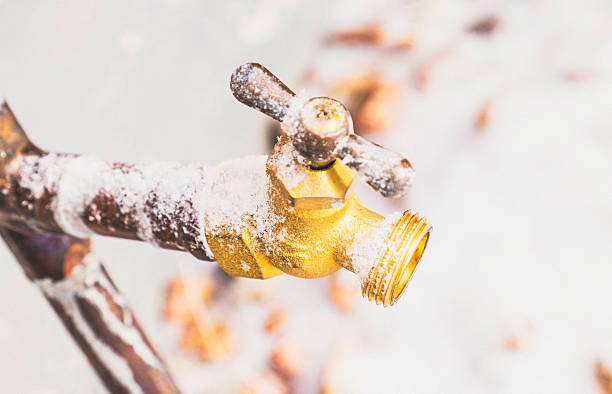With winter’s chill approaching, it’s essential to take steps to safeguard your plumbing system against the harsh conditions that can lead to frozen pipes, bursts, and water damage. To guide you through this crucial process, the renowned London plumber Staunch & Flow offers valuable insights and expertise.
Professional plumbers understand the unique challenges that London’s winters pose to residential and commercial plumbing systems. Their experience and professionalism make them a trusted resource for preparing your plumbing for the winter ahead. Whether you reside in a historic London townhouse or a modern apartment, the principles of winter plumbing preparation remain the same.

In this article, we’ll explore the key considerations and steps to ensure that your plumbing is winter-ready. From addressing the question of emptying pipes to insulating and sealing vulnerable areas, we’ll cover essential practices that will help you maintain a reliable and functional plumbing system throughout the winter months. Don’t let the cold catch you off guard – follow our guidance and ensure a warm and hassle-free winter.
Should You Empty Pipes for Winter?
The practice of emptying pipes before winter may seem like a sensible approach to prevent freezing and potential damage. However, it’s not always the best solution, and in many cases, it’s unnecessary and labor-intensive. Emptying your plumbing system involves draining all the water from the pipes, which can be a time-consuming task.
Additionally, it can lead to complications. When pipes are completely empty, they become vulnerable to freezing faster because there’s no water to conduct heat and mitigate temperature extremes. Moreover, empty pipes can allow sewer gases to enter your home, posing health risks.
Instead of emptying your pipes, consider other preventive measures like insulating and protecting your plumbing. Insulation provides a reliable barrier against freezing temperatures, and you can focus on sealing gaps, keeping a constant indoor temperature, and employing other strategies mentioned earlier to safeguard your plumbing during the winter. These practices are typically more effective and less disruptive than completely emptying your pipes.
How To Prepare Your Pipes For Winter
As the temperatures drop and winter approaches, it’s time to get your plumbing system in shape to withstand the cold. Here are essential to get your plumbing system in shape to withstand the cold. Here are essential pipes for winter:
Insulate Exposed Pipes
Start by insulating any exposed pipes. The most vulnerable pipes are those in unheated or poorly insulated areas like basements, crawl spaces, and attics. Insulating these pipes with foam pipe insulation sleeves can provide an effective protective barrier against freezing temperatures. You can also use heat tape to wrap around pipes for added insulation.
Seal Gaps and Cracks
Ensure your home’s exterior is properly sealed to prevent cold air from infiltrating. Gaps and cracks can allow frigid air to reach your pipes, increasing the risk of freezing. Seal these gaps using weatherstripping, caulk, or other insulation materials.
Drip Faucets
On extremely cold nights, allowing a slow, continuous drip from both indoor and outdoor faucets can help prevent pipes from freezing. The movement of water, even a small amount, makes it less likely to freeze. This is a simple yet effective precaution, especially for vulnerable pipes.
Keep the Heat On
Maintaining a consistent indoor temperature is crucial. Even when you’re away from home, it’s advisable not to lower the thermostat too much during the winter. A significantly reduced indoor temperature can put your pipes at risk. If you plan to be away for an extended period, consider leaving the heat on at a minimum temperature to keep your pipes safe.
Service Your Water Heater
Your water heater works harder in the winter to provide warm water. Schedule regular maintenance to ensure it operates efficiently, delivering hot water without undue strain. A well-maintained water heater will help prevent cold showers during the chilly months.
Disconnect and Drain Outdoor Hoses
Before the first frost, disconnect and drain your garden hoses. Store them indoors to prevent freezing, which could lead to damage to the outdoor faucets they’re connected to. It’s a simple but effective measure to preserve your outdoor plumbing.
Know the Location of Your Main Shutoff Valve
In case of a plumbing emergency, such as a burst pipe, it’s crucial to know where your main water shutoff valve is located. Turning off the water supply promptly can prevent further damage while you wait for a plumber to arrive.
7 Other Steps To Preserve Your Plumbing During The Winter
Beyond the core steps for preparing your plumbing system for winter, there are additional measures that can further protect your pipes from freezing and ensure a trouble-free season:
1.Consider Pipe Heating Cables
In regions with extremely cold winters, you may want to consider installing pipe heating cables. These are electrical cables that can be wrapped around pipes to provide consistent, low-level heat. This extra warmth helps prevent freezing and is particularly beneficial for pipes in uninsulated or vulnerable areas.
2.Open Cabinet Doors
Allow warm air to circulate around pipes located under sinks by opening cabinet doors during cold spells. This helps maintain a more stable temperature around these vulnerable pipes and reduces the risk of freezing.
3.Inspect for Leaks
Address any existing leaks or drips promptly. Even minor leaks can freeze, worsen over time, and lead to extensive damage. Inspect all faucets, fixtures, and visible plumbing for signs of leaks and have them repaired as needed.
4.Schedule a Professional Inspection
Arrange for a professional plumbing inspection before winter sets in. Plumbing experts can identify any potential issues that may require attention. They can also assess the overall health of your plumbing system and provide recommendations to ensure it’s ready for the cold season.
5.Emergency Preparedness
Prepare for unexpected emergencies by having a basic plumbing toolkit on hand. Include items like pipe insulation materials, pipe wrenches, and a plumbing tape kit. Familiarize yourself with the location of your main shutoff valve and know how to turn off the water supply in case of a sudden plumbing issue.
6.Protect Outdoor Faucets
Install faucet covers on your outdoor faucets to insulate and protect them from freezing temperatures. These covers are inexpensive and easy to install, making them a worthwhile investment to prevent outdoor plumbing damage.
7.Thawing Pipes Safely
If you encounter frozen pipes, it’s essential to thaw them safely. Never use an open flame or excessive heat, as this can damage the pipes. Instead, use a hair dryer or heating pad to gradually warm the frozen section. Always work from the faucet end of the pipe toward the frozen area to allow water to flow as it thaws.
Final Words
Preparing your plumbing system for winter is a proactive step that can save you from the hassle and expense of dealing with frozen or burst pipes. With the guidance provided in this article, and the expertise of professionals, you can ensure that your plumbing system operates smoothly and reliably throughout the winter months. Don’t let the cold catch you off guard; follow these essential steps to safeguard your pipes, and enjoy a warm and trouble-free winter in your home.


